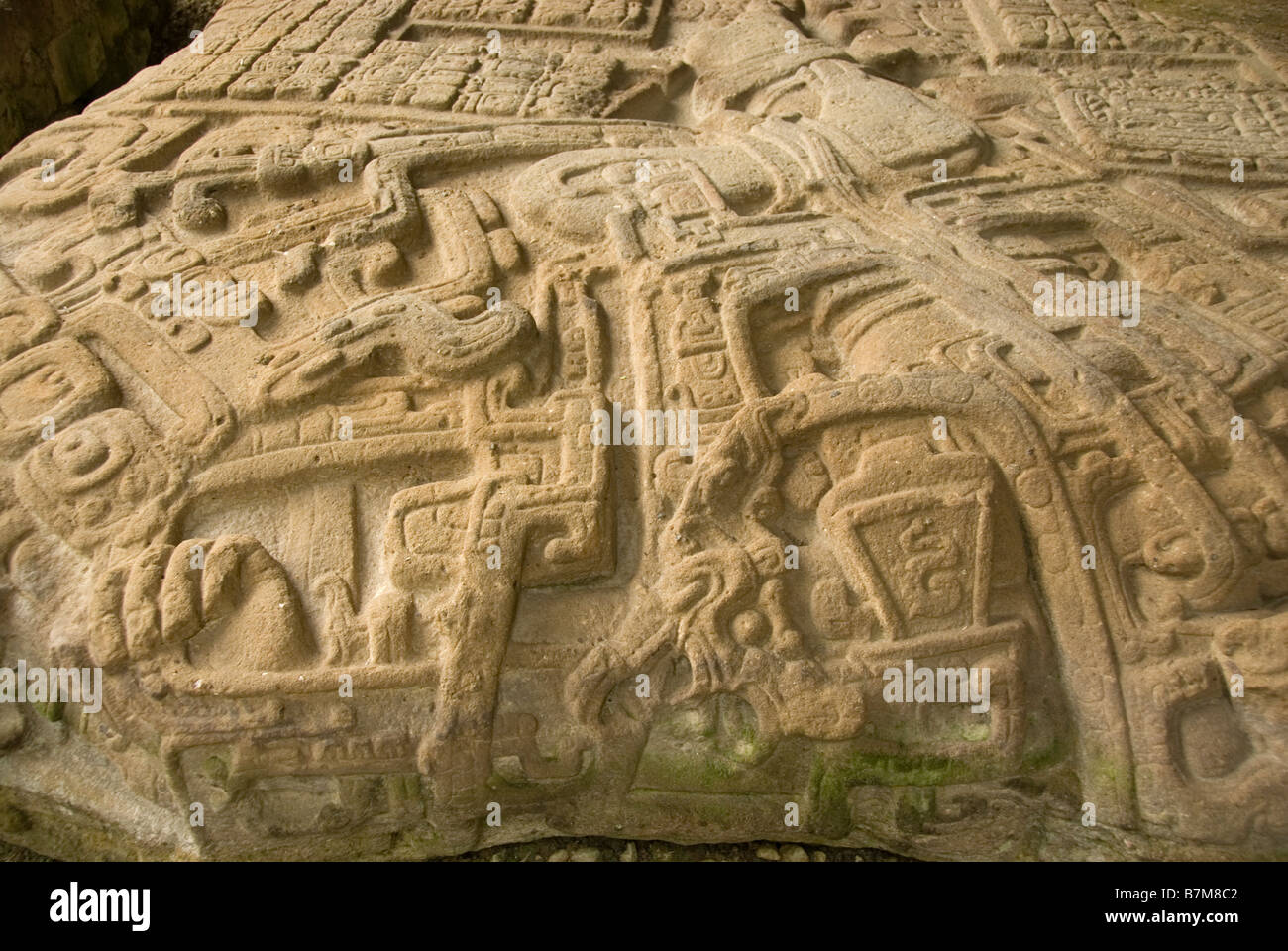Detail of Altar to Zoomorph P (Monument 24). Quiriguá, Guatemala.

Image details
Contributor:
Bert de Ruiter / Alamy Stock PhotoImage ID:
B7M8C2File size:
50.2 MB (2.4 MB Compressed download)Releases:
Model - no | Property - noDo I need a release?Dimensions:
5120 x 3427 px | 43.3 x 29 cm | 17.1 x 11.4 inches | 300dpiDate taken:
18 November 2008Location:
Central Latin America Mesoamerica Izabal department Quirigua GuatemalaMore information:
From Wikipedia, the free encyclopedia: Quiriguá is an ancient Maya archaeological site in the department of Izabal in south-eastern Guatemala. It is a medium sized site along the lower Motagua River, with the ceremonial center about 1 km (0.62 mi) from the north bank of the river. During the Maya Classic period (AD 200–900) Quiriguá was situated at the point where several important trading routes came together. The site was occupied by 200, construction on the acropolis had begun by about 550 and an explosion of grander construction started in the 8th century. All construction had halted by about 850, except for a brief period of reoccupation in the Early Postclassic (c.900–c.1200). Quiriguá shares its architectural and sculptural styles with the nearby Classic Period city of Copán, with whose history it is closely entwined. Quiriguá's rapid expansion in the 8th century was tied to the military victory by Quiriguá's king K'ak' Tiliw Chan Yopaat (previously known by the nickname "Cauac Sky") over Copán in 738, when the greatest king of Copán, Uaxaclajuun Ub'aah K'awiil or "18-Rabbit", was defeated, captured and then sacrificed in the Great Plaza at Quiriguá. Prior to this Quiriguá had been a vassal state of Copán, afterwards it maintained its independence. The ceremonial architecture at Quiriguá is quite modest, but the site remains important due largely to its wealth of sculpture, including the tallest stone monuments ever erected in the New World